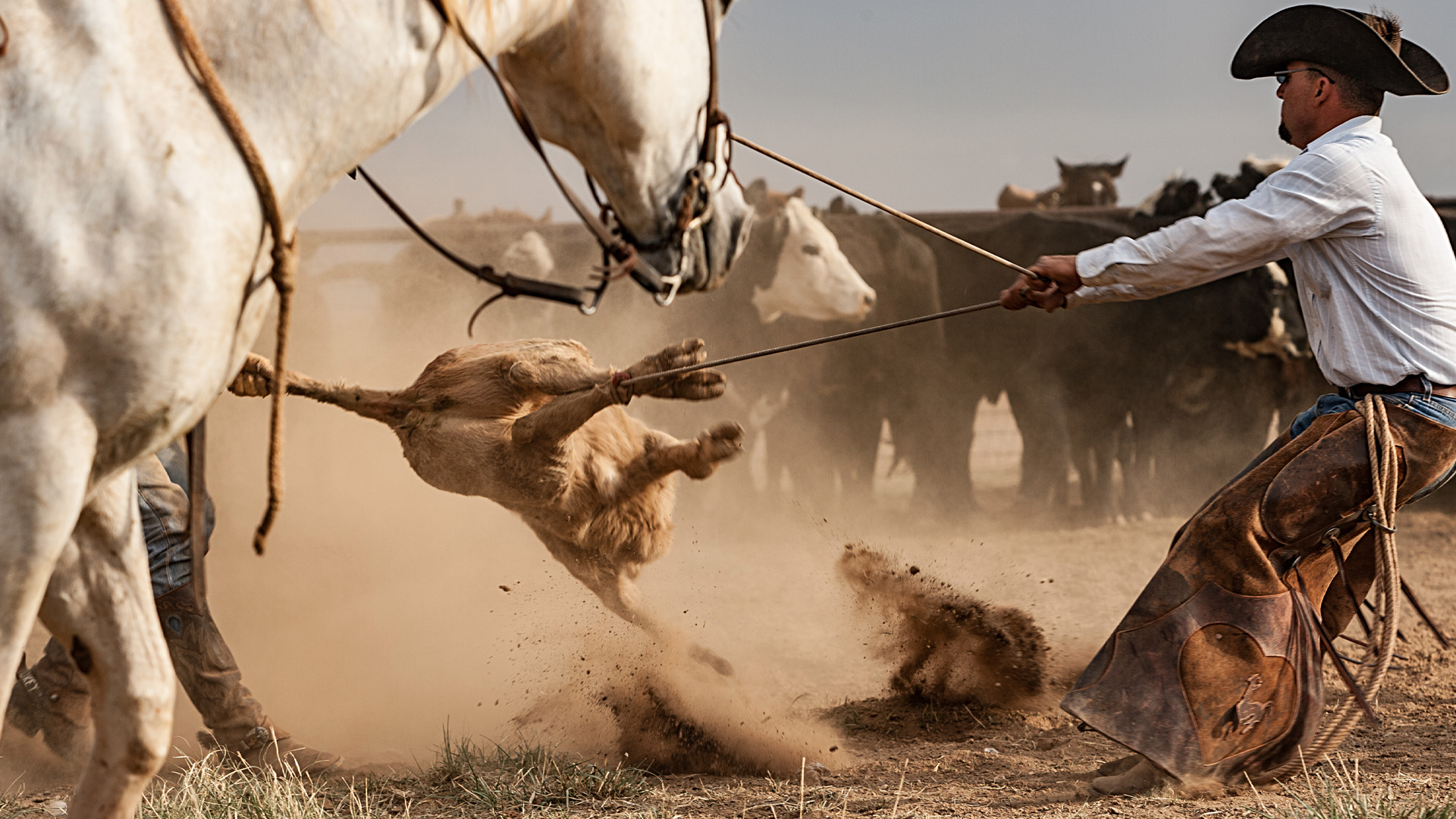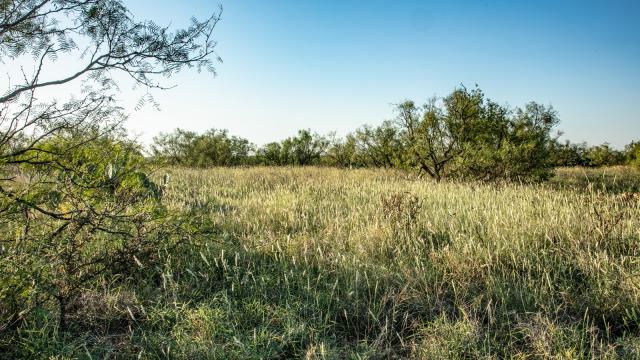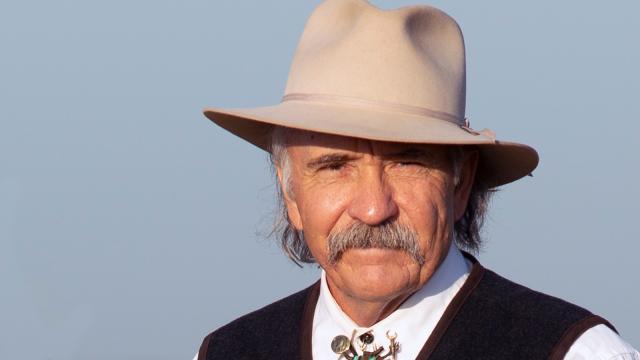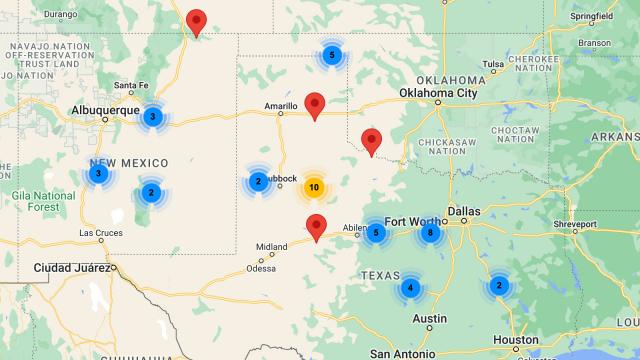Article and photos by Wyman Meinzer
The short bed cattle truck pulled up to the cook tent and spilled its contents, some 10-15 dust-covered cowboys sporting leggings, sweat-drenched hats, and jingling spurs. I was all of 8 years old and although my dad was the foreman on a 27,000-acre ranch since I was a toddler, these rough and tumble Waggoner cowboys presented an intimidating sight to a young boy on that cool late winter day.
My dad, brother, and I were visiting the sprawling Waggoner Estate on a day of branding and had stopped at the chuck wagon over near the pasture named Comanche to have a meal. That was 64 years ago and I still recall the visit as if it was yesterday.
Since that day I have spent most of my life in big ranch country, not as a cowboy but with camera in hand, documenting the big ranch way during various seasons, especially branding time. It is a significant event on these big outfits, some processing as many as 10,000 head of calves during approximately two months of concentrated work. Until recently, I had assumed the big ranches throughout our southwest had originated this method of identifying ownership of cattle. But I was wrong.
Historically, the Americas did not originate the practice of burning a unique configuration on the hide of cattle to prove ownership, despite the common notion. Actually, branding cattle originated some 4,700 years ago by the Egyptians, as seen in paintings etched on the walls of burial tombs.
It seems that the practice of using a hot iron to scald a personal mark on the hip or side of cattle was introduced to the Western Hemisphere by Spanish explorers in the 16th century when Hernan Cortes adopted this method to identify his own cattle herd in Mexico. Soon taken up by ranchers in America, the earliest recorded brand in Texas was by Richard Chisholm, of Gonzales County, in 1832.

During my younger years as a teenager on the League Ranch, I became well acquainted with the use of a hot iron to burn the League Davis brand on registered Herefords but in later years my cameras documented the same age-old method of identification on ranches such as the 6666, Pitchfork, Waggoner, King Ranch and a host of others. Such work is a fast-paced, dusty job replete with the fragrance of burning hair, bawling cattle, swirling horses and ropes.
A less painful method of identifying ranch cattle is gradually replacing the hot iron and referred to as “Cold Branding” which includes the application of liquid nitrogen or dry ice to the branding iron which effectively changes the color of the affected hair but still retains the owner's identifying brand.
Although change is the lifeblood in all businesses, branding will continue to be the mainstay in identifying livestock ownership by ranchers throughout the country. Whether the irons are hot or cold, spring branding will continue to present a fast-paced workload that identifies the big ranch way as it has been through centuries in our past.



